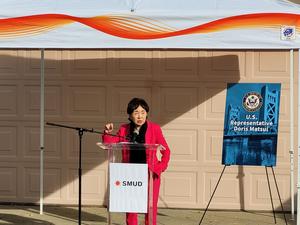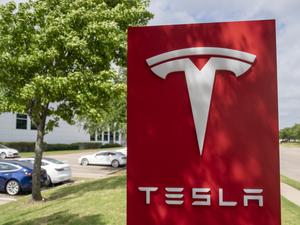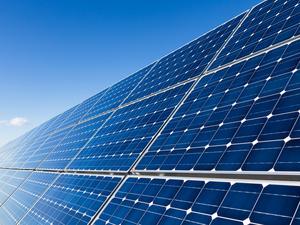California's aggressive push to quickly get more electric vehicles on the road to combat air pollution and climate change will require a massive expansion of public charging stations.
The state is committing billions of dollars to the effort, but it is still an open question whether Californians in the coming decades will find enough places to charge their electric cars.
"A challenge to where we are at now is that we need to install so many chargers so quickly," said Zach Henkin, director of EV program research at the Center for Sustainable Energy, a nonprofit research group based in San Diego. "That rush means we are expediting decisions."
California needs many more public charging stations to calm so-called range anxiety about how far drivers can go from home and, more importantly, to charge the vehicles of more than half of the state's drivers who can't charge at home.
Currently, more than 80% of EV charging is done at the home. That's a problem because not all homes can easily support EV charging, and only 55% of California's population owns a home in the first place, according to the Census Bureau.
And the clock is ticking.
The state has mandated that all new cars sold in the state starting in 2035 be zero-emission vehicles.
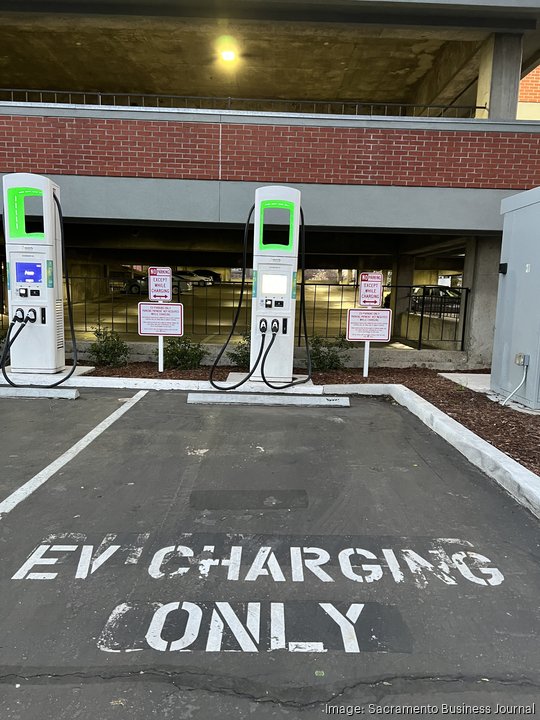
Some 18.8% of all new cars sold in California in 2022 were zero-emission, according to the governor's office. That represented 40% of all zero-emission vehicles sold in the nation.
The state is embarking on an aggressive schedule to make more public chargers accessible. In December, the California Energy Commission approved spending $2.9 billion on infrastructure for EVs through 2025.
After beginning its push to install charging stations two years ago, California now has 80,000 of them. It will have to pick up the pace to meet its current goal of more than tripling its number of charging stations to 250,000 by 2025.
And that pace of adding chargers will likely continue into the future, as current estimates are that the state will need 1.2 million public chargers total by 2030, said Mark Wenzel, branch manager, light-duty EV infrastructure and analysis with the California Energy Commission.
In the short term, home charging is going to lead the way because that is the way the consumer market is going, Wenzel said, as the vast majority of people who now have EVs charge them at home.
As for the public EV chargers that will be needed to support the majority of Californians in the future, Henkin noted that they are going to be installed in a hurry in the next few years but that they "are going to be there for decades," so it will be important to pick locations where they will be used.
The public chargers need to be in places where there is ready driver access, where there is capacity for the electrical load and where the location lines up with stakeholder interests. Stakeholders can be landowners or neighbors who may or may not want the constant traffic.
Permitting, at least, shouldn't be a problem. In 2015, the state approved a streamlined permit application process statewide for EV chargers under Assembly Bill 1236. But by early 2021, less than 25% of the state's cities and counties were in compliance with the law. So, in 2022, the state passed AB 970, which gives local agencies up to 10 business days to approve a charger permit; the application is automatically approved if the local agency doesn't reply.
Current complications
Even home charging has challenges. Older homes can require expensive retrofits to be able to handle the addition of a faster charger or two.
About 80% of EV charging happens at home, according to the U.S. Department of Energy. That could be Level 1 charging, which is basically just plugging into a grounded 110-volt wall socket, or it could be Level 2 charging, which requires a 220-volt plug like is used for an electric range or a clothes dryer.
In Sacramento County, there have been cumulative sales of 21,775 battery electric vehicles through 2022, with 7,844 of them sold in 2022 alone, according to the California Energy Commission.
The Sacramento Municipal Utility District, which provides power to nearly all of Sacramento County, had 18,505 home customers on its EV rate at the end of February, said SMUD spokeswoman Lindsay VanLaningham. The EV rate offers users a credit for charging between midnight and 6 a.m.
That implied that about 85% of EV owners in Sacramento have a home charger.
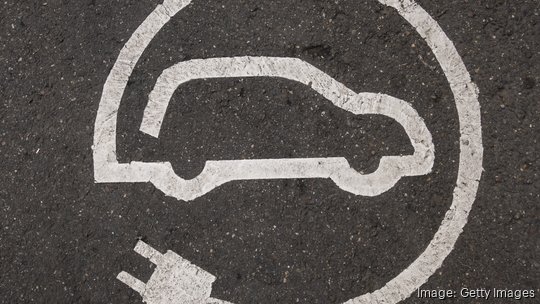
On the public charging side, Sacramento County has 295 DC fast chargers installed and 1,374 Level 2 chargers installed, according to the California Energy Commission.
Some cities, like Los Angeles and Berkeley, are installing chargers on city streets. So-called "right of way charging" allows the cities to site chargers where they are either most needed or where the infrastructure and grid capacity is already there, Henkin said.
For drivers who can't easily install home charging, they could potentially plan to charge at a combination of work and at fast-charge locations.
"You can do that, but you do have to develop a strategy," Henkin said.
All the new public EV chargers are not going to be funded entirely by public investment. There is a business proposition for installing chargers for some retailers and restaurants, Henkin said. "A charging station by definition creates dwell time," he said, so it is a good match for shopping centers, restaurants and convenience stores that could benefit from having people stick around while their car is charging. The Downtown Commons shopping center in Downtown Sacramento, for example, offers free charging to guests.
Some Downtown office buildings have installed chargers as an amenity in their garages. There are six Level 1 chargers in the garage for 555 Capitol Mall, an office tower in Downtown Sacramento.
The spaces with chargers are reserved spaces, and they cost $300 a month, which is a premium to the $250 cost for a reserved space without a charger, said Matt Lowery, project manager with Rubicon Partners Inc., which manages the office building and garage, which is across the street from Golden 1 Center.
Only one of the six charger spaces is occupied now, he said, and that's probably because they are all slow chargers. Rubicon is working with SMUD to investigate installing faster chargers, but that could be difficult, as it would create accessibility requirements under the Americans with Disabilities Act for those spaces in the garage that was built in 1970. And installing fast chargers may create too much load on the grid in the location.
"It gets complicated pretty quickly," Lowery said.
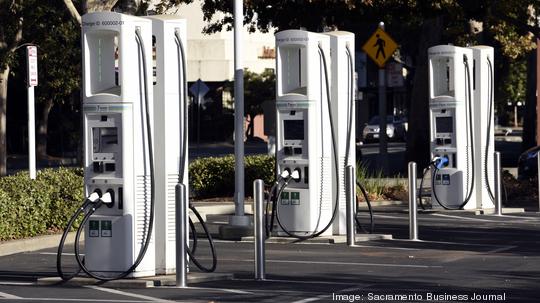
Starting this year, the California Building Standards Code requires all new single-family homes and duplexes be prewired for EV chargers. New apartment buildings and commercial buildings need to prewire for EV chargers roughly in a ratio of 6% of parking spaces for developments with more than 201 parking spaces. There is a sliding requirement for small developments. A project with 10 to 25 parking spaces is required only to be prewired for one charger.
Other states are watching the leaders like California that are including EV charging preparations in their building codes, Henkin said. "That will be saving headaches for years to come."
Some oil companies are developing strategies to install fast chargers at their existing gas station properties. They already have the land, so the charger could be a natural fit if there are a lot of EVs registered in the area or if they are on busy corridors, Henkin said.
The cost of installing a car charger in a home garage depends to a great extent on the home, and how it's wired. If your electrical panel is not near where the car is going to be charged, it will require an electrician to do the work, said Kevin Favro, co-founder and co-CEO of EV Life Inc., a website that assists people with finding rebates and incentives for EV purchases.
Favro has had an EV for four years. For the first three, he just used a basic wall charger. That takes days to bring a car up to full charge, but he wasn't driving very much at the time.
When he did finally install a Level 2 charger, it cost him $1,600 to get the house ready for it.
Buying a Level 2 home EV charger ranges from $300 to $700, but that's not necessarily the entire cost, said Thomas Hall, executive director of CleanStart Sacramento, a nonprofit that promotes development of clean technology in Northern California. It cost him about $5,000 to get his home ready for a Level 2 charger, which was free from SMUD with a rebate.
Home EV chargers are required to be on a dedicated circuit, and installing a new dedicated circuit requires an electrician and a building permit, said Bob Brinzer, owner of Trident Electric Service Inc. in El Dorado Hills. His company is a SMUD-approved installer, and inquiries about charger installation account for 70% of calls to his business.
"I think we're just scratching the surface now," he said.
Even if a home's electrical panel has an extra dedicated circuit, it's still necessary to see if there is capacity to service the load of adding a Level 2 car charger.
If a new circuit is needed, permits, fees and inspection cost around $250. If the electrical panel is on the same wall, either inside or outside from where the charger will be installed, installation alone can cost $500 if the home's existing panel can handle it, Brinzer said.
But if the electrical panel is far from where the charger is, the cost can run up into thousands of dollars. And if the electrical panel needs to be upgraded, costs rise quickly. With underground power running to an older home, changing out the connection and the panel ⏤ which often isn't up to modern building codes ⏤ the installation could run $4,000 to $6,000. Then some utilities charge a fee for doing a site inspection on the work, which can be over $1,000.
"There are a lot of people who decide not to install them because of the cost," Brinzer said.
Finding the workforce
Installing hundreds of thousands of new chargers in the coming years will require a lot of electricians.
Finding that workforce could be both a challenge and an opportunity, Henkin said.
Installing EV chargers can help electrical contractors fill in work between larger jobs, he said. "It's a nice addition to their business."
Some home charger installers are also cross-selling solar photovoltaic systems when they get leads on charger installations, Henkin said. "It makes sense. You are such a good candidate for solar if you have an electric car, because you are using a lot of electricity."
Charger installations will create a demand for electricians and that could expand the workforce, he said. And in many cases, solar installers can also install charging stations.
In the Sacramento area, the California Energy Commission is funding 144 hours of free career training each for 100 people in EV assembly, repair and equipment installation through the Sacramento-based nonprofit California Resource Project Inc. That is being funded under a $6.8 million statewide workforce development grant.
Over the longer term, investments in public charging infrastructure will come from many places.
In addition to the $2.9 billion that the California Energy Commission is spending through 2025, there are other sources of funding. The California Public Utilities Commission has a requirement that the state's investor-owned utilities put $2.85 billion toward EV infrastructure through 2030. The federal government, through the Infrastructure Investment and Jobs Act of 2021, is investing $5 billion nationally and about $384 million into California for the electrification of transportation over the next few years. The California Air Resources Board will have credits and incentives available, as well.
All of those groups, along with the Governor's Office of Business and Economic Development, or GO-Biz, are trying to coordinate efforts to be more efficient.
By 2030, EVs are expected to account for 5% of peak electric load in California and 10% of total electric usage. It's an increase, but "we're not doubling use on the system," said Hannon Rasool, director of the Fuels and Transportation Division of the California Energy Commission.
Car charging also includes a lot of flexibility in its timing, and incentive pricing will likely motivate consumers to charge their batteries when they get charged the least money, Rasool said.
The rush to facilitate more EV charging is also pushing innovation, Henkin said, adding that there are many interesting fixes in the works. In places where the grid can't handle the peak load of adding a public charger, the developer can install a storage battery linked with software to an EV charger. That way, a power control program charges the storage battery at optimal times from the grid, and then the storage battery charges cars at a charging station at whatever time they need some range.
